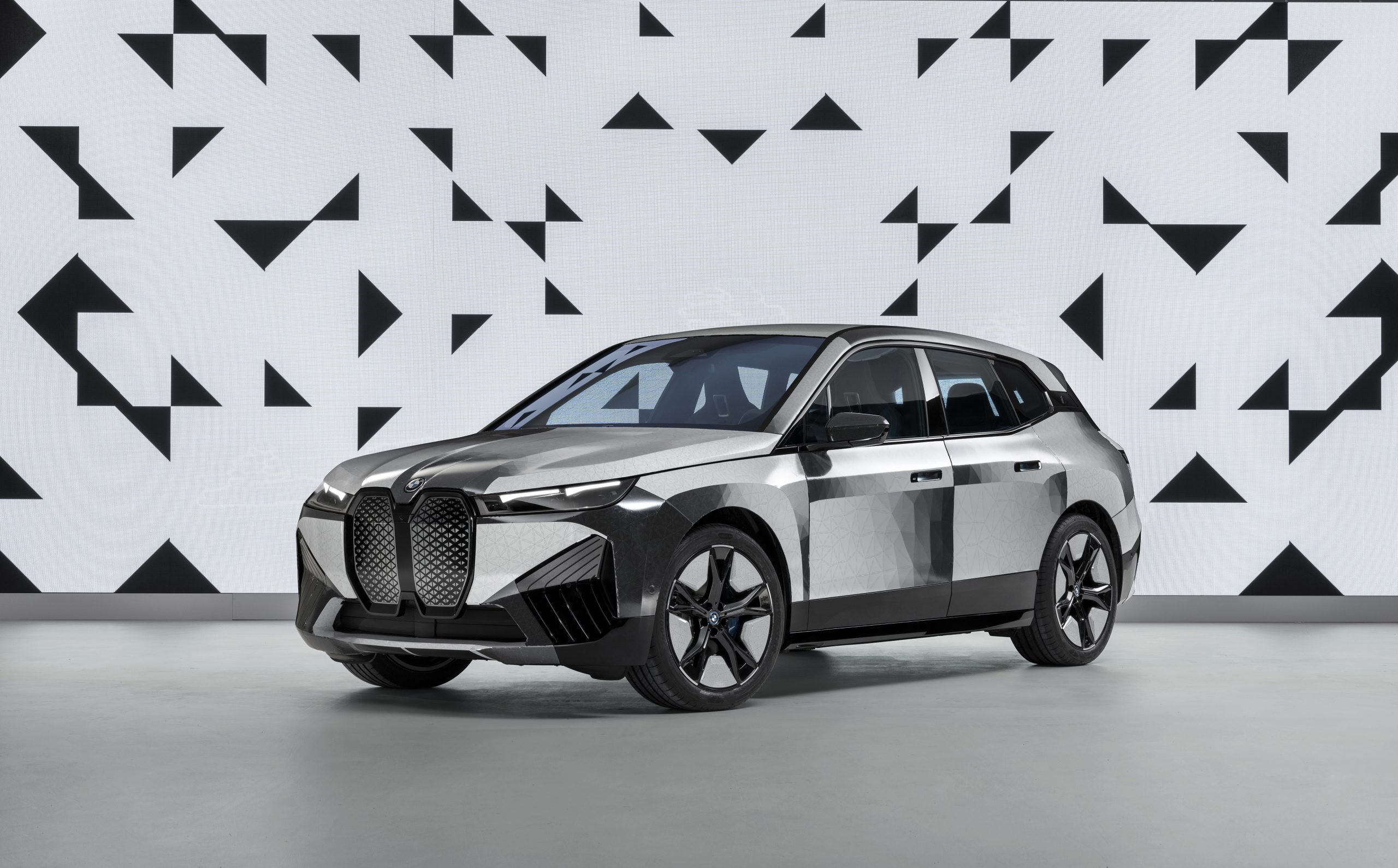On January 6, 2022, BMW showcased several of its digital achievements through an online sharing conference. These include four new theme modes (My Modes), a floating screen, simulated electric vehicle sounds, and the “electronic ink” technology that allows for variable body colors.
The Secret Behind Variable Body Colors
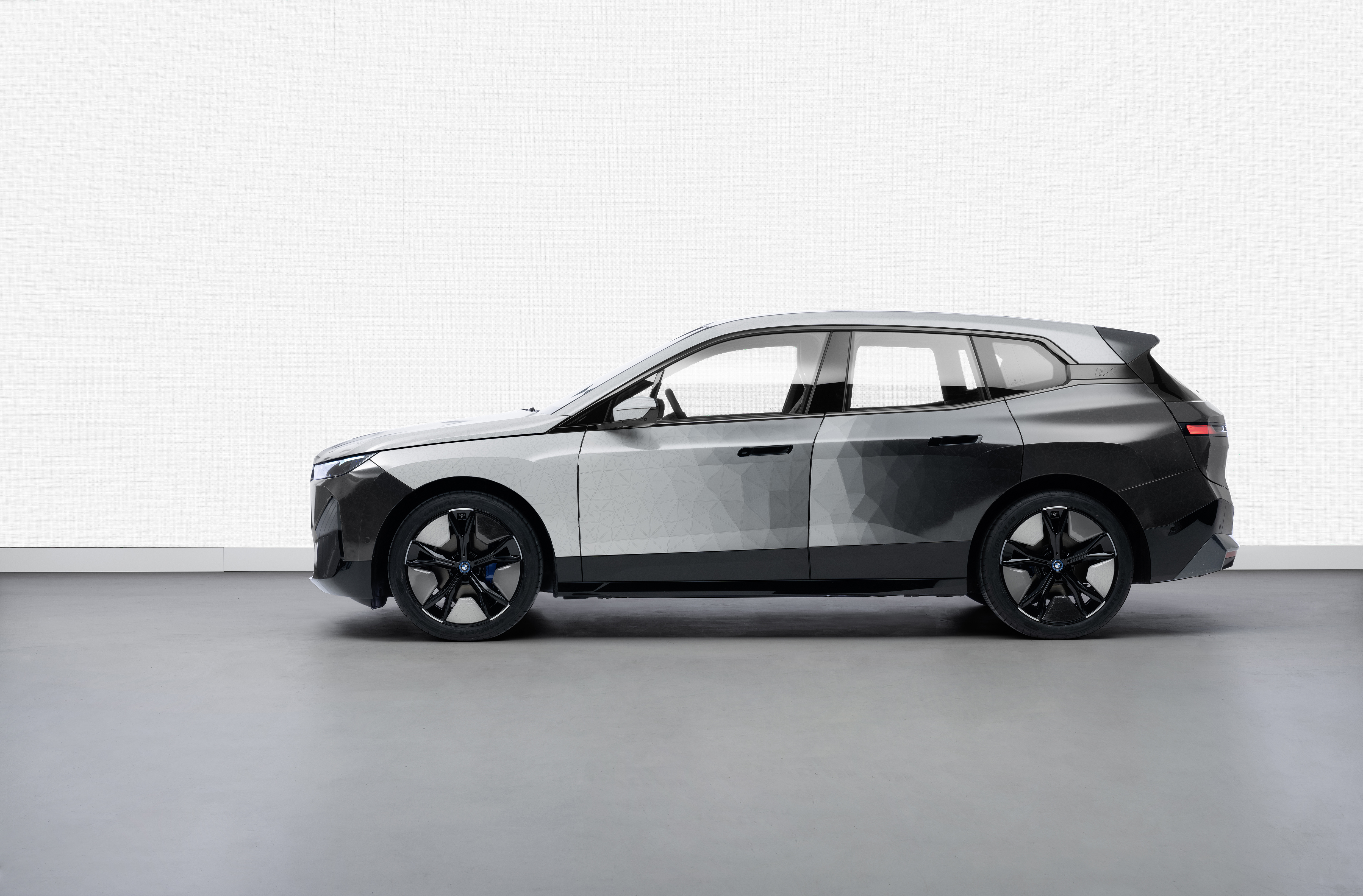
BMW presented the iX with variable body colors at CES, which attracted a lot of attention. During this morning’s analysis session, BMW revealed the answer to us – an electronic ink screen!
Yes, it’s the same screen that you use to read e-books on your Kindle, and BMW simply applies it directly to the car body for color changing. Of course, there are many interesting technologies and stories involved, which I will explain one by one.
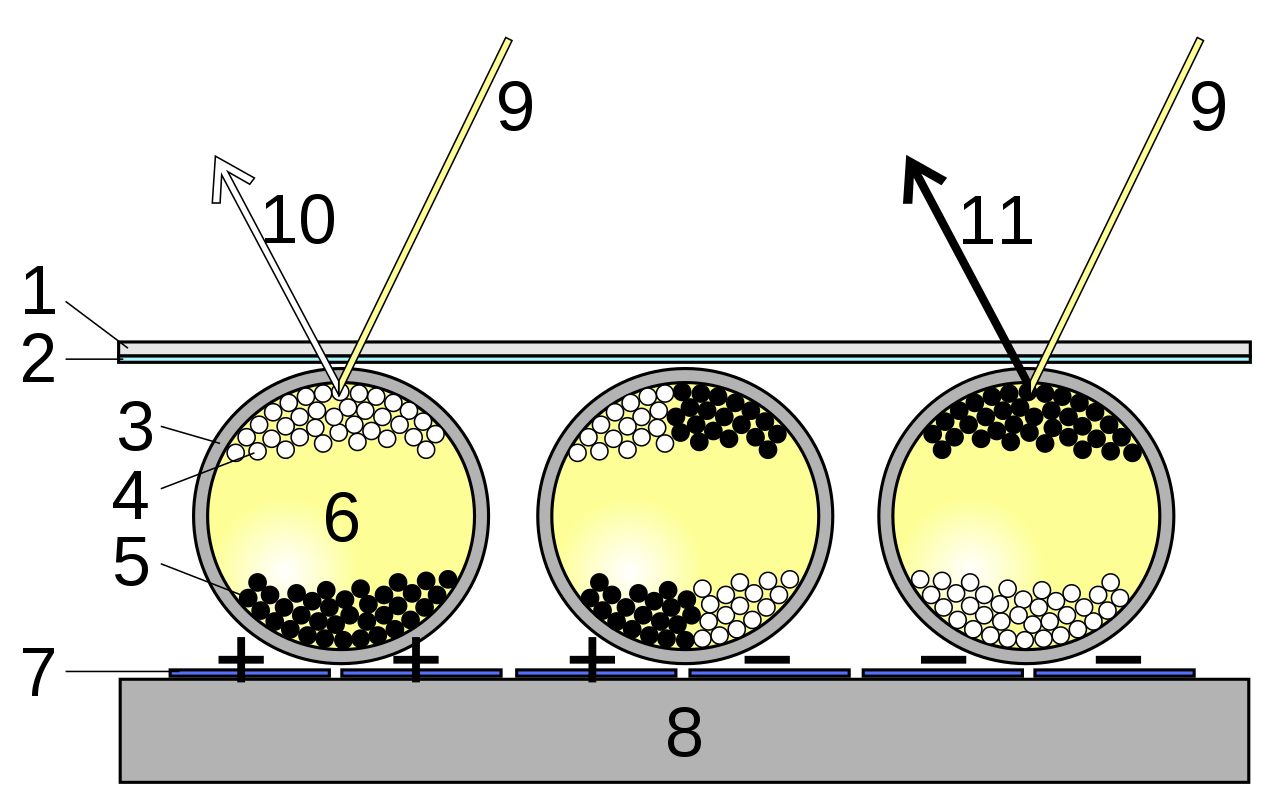
Firstly, the electronic ink screen (also known as “e-paper display technology”) works as follows. First, black and white particles with specific charges are encapsulated to form many microcapsules. Then, by applying different charges to the electrodes, the color of each microcapsule can be changed, thereby changing the perceived grayscale color. Of course, you can also add other primary colors to create color variations.
Because these microcapsules, affected by the charge, have an effect similar to that of liquid ink in presentation, the technology is called “electronic ink screen”. Another advantage of this screen is that the reflection under natural light is closer to paper, which is why it is also known as “e-paper”. At the same time, the power consumption of this screen is very low, and even after cutting, it will not affect the parts that are powered.
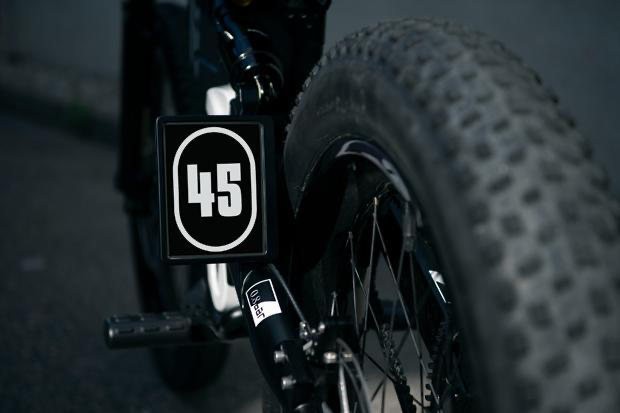
This display technology is not only used in e-readers. BMW has already paired electronic ink screens with the license plates of Vision Amby bicycles.
Now coming back to cars, it may seem that putting this screen on the body of the car is all that is needed to achieve color changes, but the “placement” process is actually very complicated.
Because the screen is a two-dimensional plane (2D), while the surface of the car body has too many protrusions and depressions, it is a real three-dimensional (3D) structure. Of course, someone might say, “Just use a flexible screen,” to which I would say: “It’s all about cost, brother.”
So how do we achieve “dimensional uplift” and put a planar screen on a three-dimensional structure?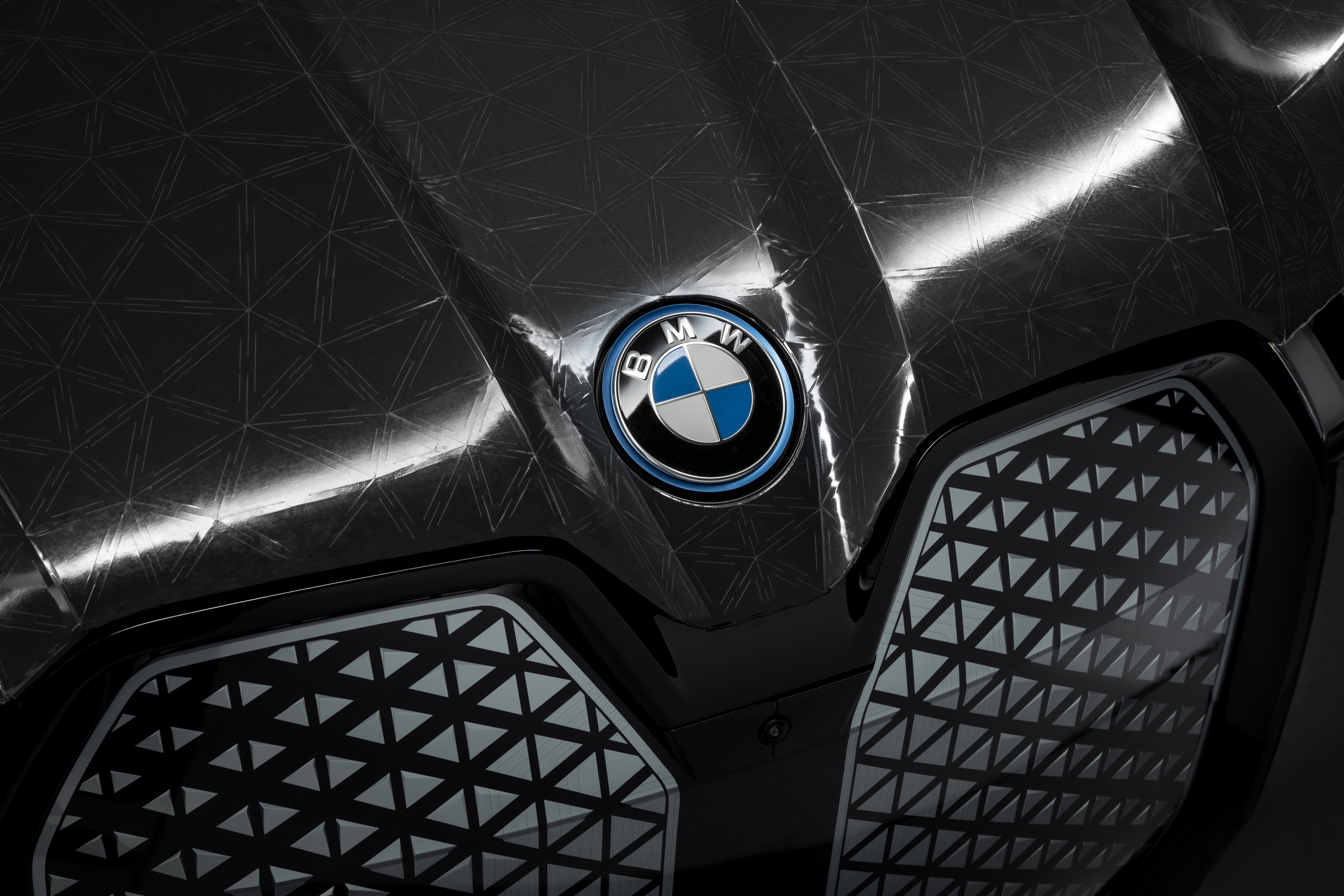
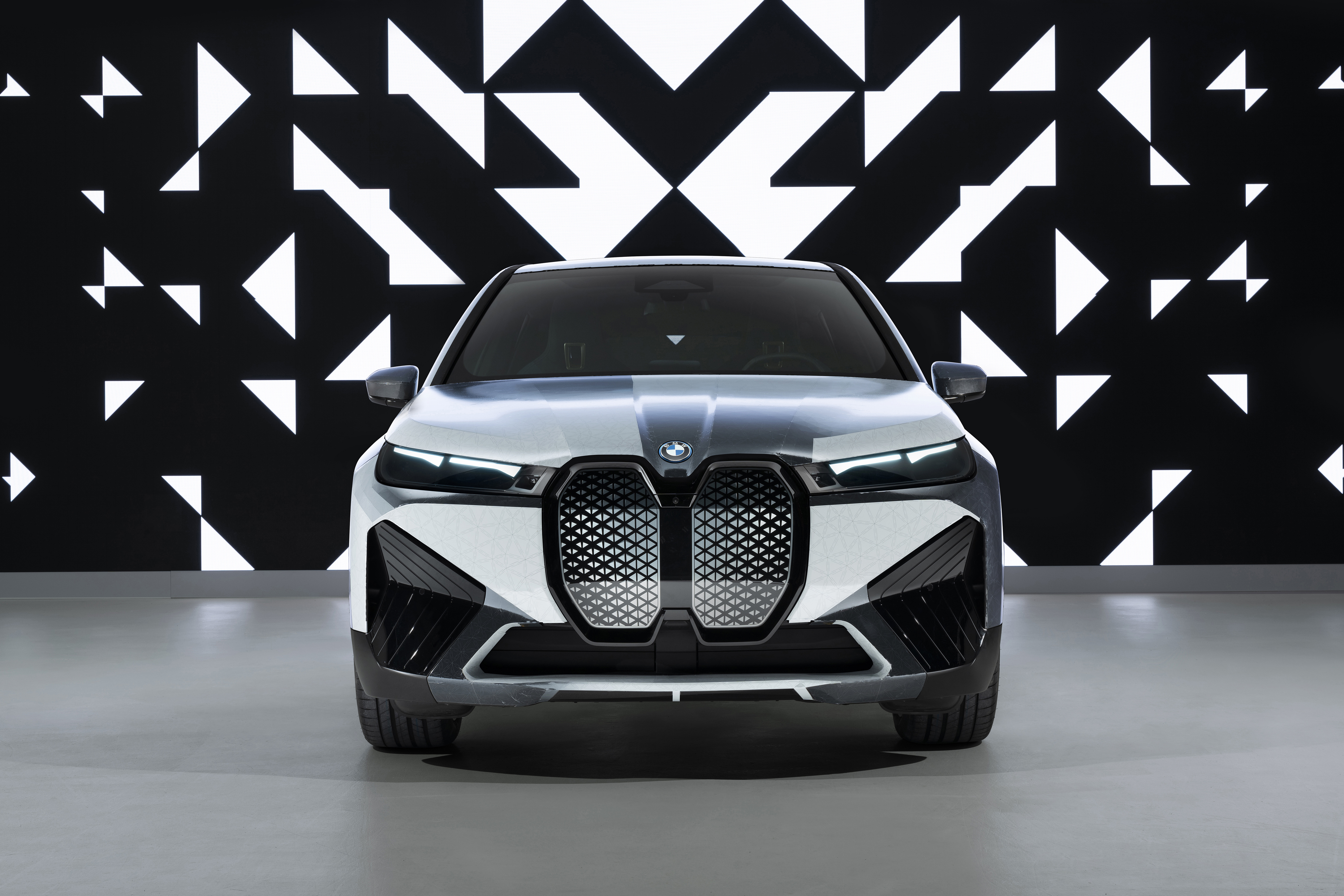
Here, I need to introduce a simple mathematical principle. Dividing the surface of a circle infinitely will result in a two-dimensional figure close to the surface. That’s how BMW turned the car body from “3D” to “2D,” but it’s easy to imagine how much work is involved in the cutting process. So BMW has used “generative design” (a design method assisted by AI algorithm) to calculate a set of exclusive patterns for the car body.
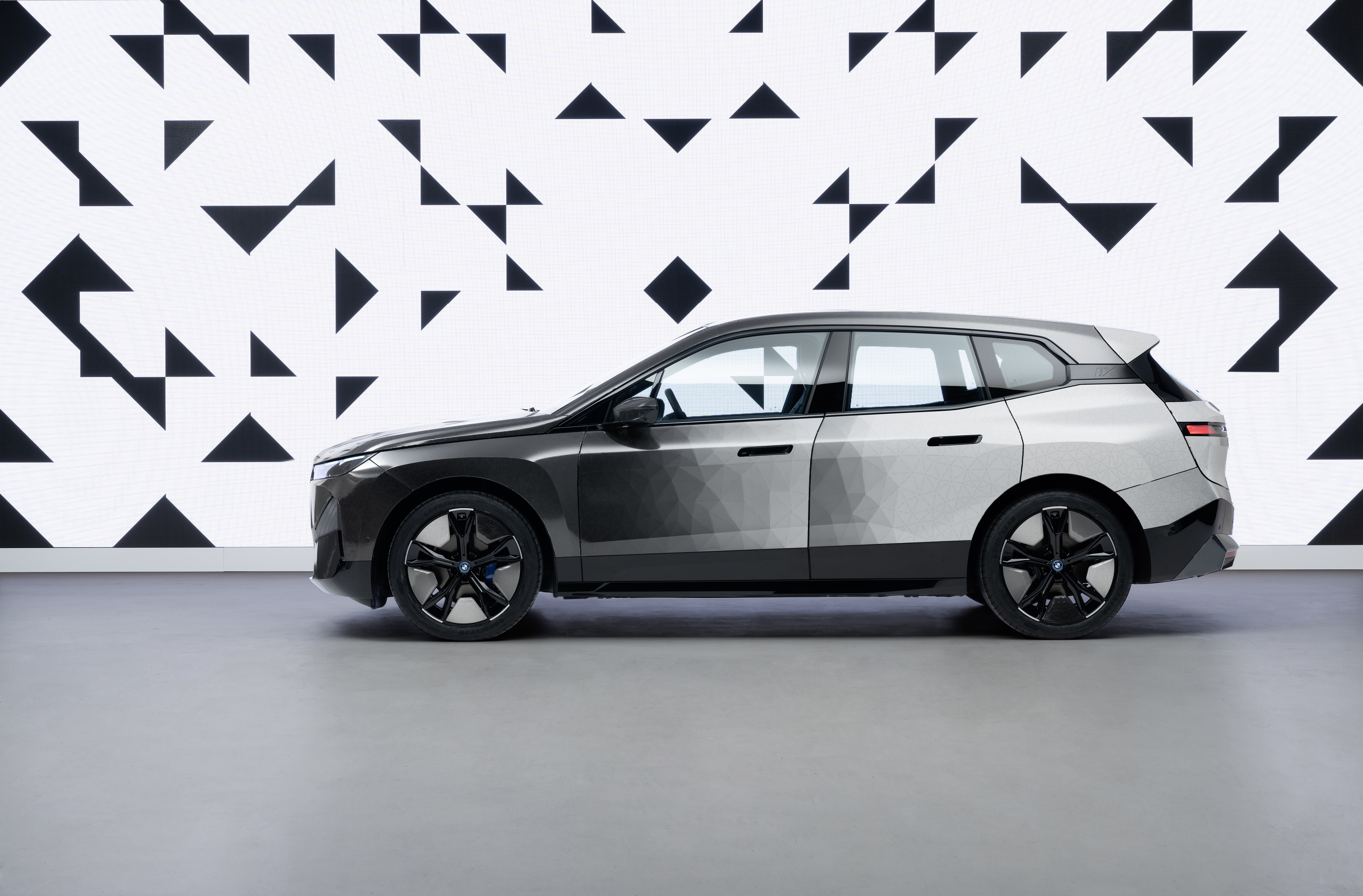
Then, the highly customized pattern is carved into the car body through laser cutting. The logic is clear, but BMW has tested it many times on paper and car front before finally finding the best solution. In fact, when I think of the best application of this technology for vehicles, it is the Cybertruck with many flat surfaces.
Finally, BMW added a “screen” to the body, coated it with a waterproof layer, and completed the color-changing body.
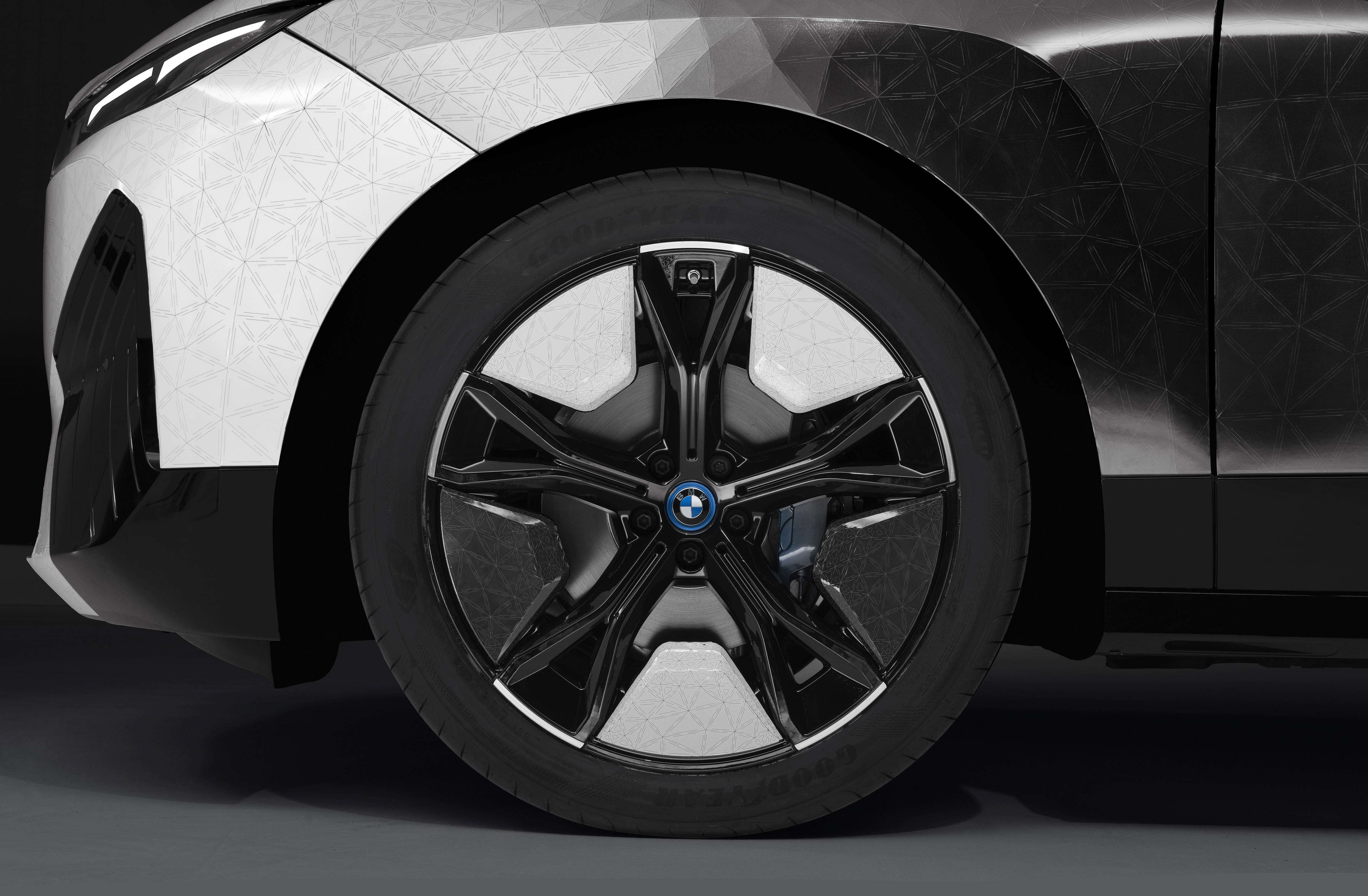
Therefore, this bodywork not only can quickly change grayscale, but also theoretically supports the editing of patterns and texts. However, the problem is that currently laws and regulations do not allow this vehicle to be driven on the road, and the cost of developing the “screen bodywork” under this development process will not be low. The advantage given by BMW official is that the white body can resist solar radiation and the black body can absorb heat quickly.
Let’s expand a bit, actually, if the cost of this “screen bodywork” is significantly reduced in the future, the biggest use of this bodywork may be to significantly reduce the communication cost with the outside world, and the display of the entire bodywork can also be more prominently displayed.
Cinema Screen
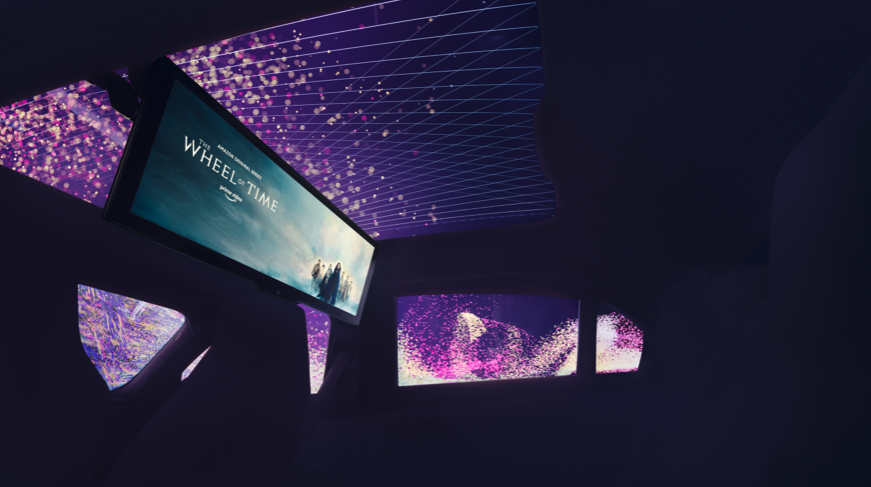
The concept of the third space is not only spreading “virally” among new domestic forces, but BMW also showcased the in-car movie mode at CES.On the rear sky curtain, there is a 31-inch ultra-wide 8K resolution display screen hanging, and BMW delivers the viewing experience into the car through 5G interconnection, surround sound, and customized streaming programs.
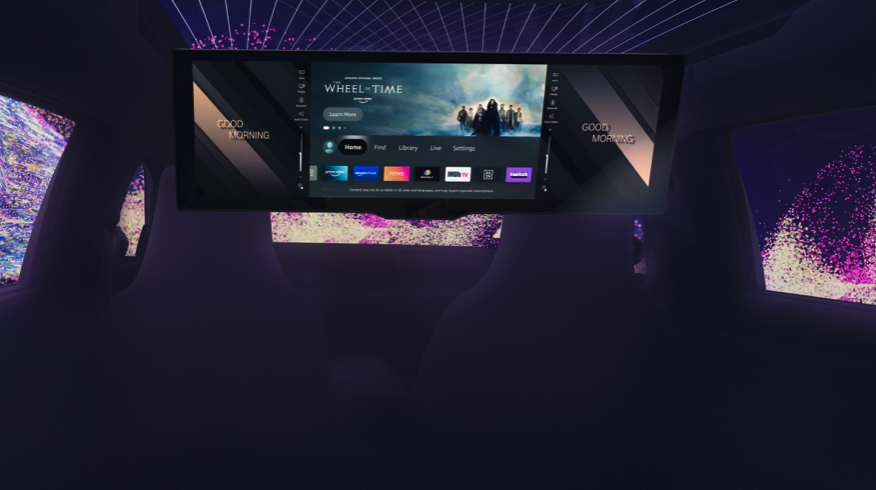
On this screen, entertainment content can be played in multiple ratios including 16:9, 21:9, and 32:9, while Bowers & Wilkins 4D diamond surround sound system also provides audio support. And in terms of content, BMW has brought in Amazon Fire TV for support.
For Chinese users, BMW said it will collaborate with local suppliers to provide in-car entertainment experiences that meet Chinese users’ preferences.
And Mr. Gaole, President and CEO of BMW Greater China, said: “China has become a global innovation leader and a key driving force for digitalization. China’s trends will lead the direction of the world. With the principle of “China first,” BMW will accelerate the digitalization process.”
IconicSound Electric
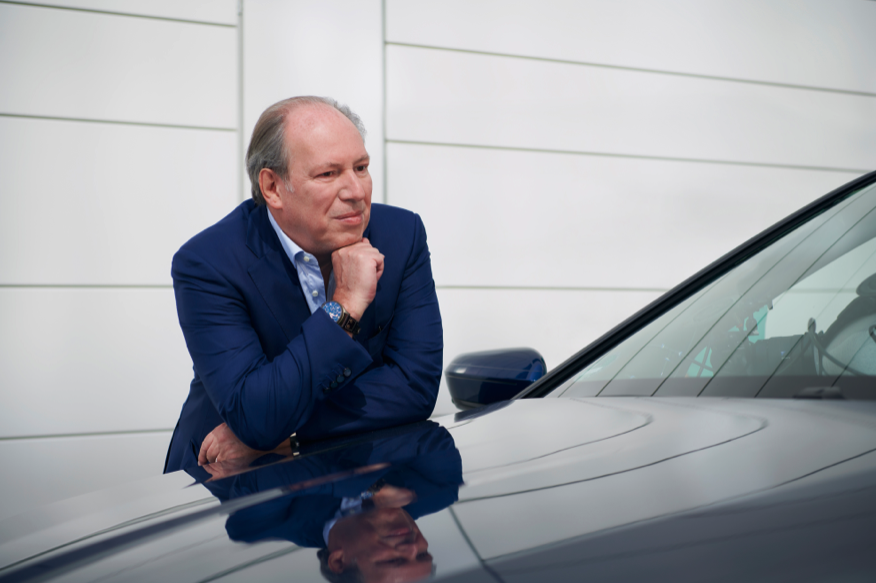
Many people like the sound of traditional combustion engines. Therefore, BMW invited Hans Zimmer to produce BMW IconicSounds Electric for the sound of electric vehicles.
Hans has produced music for “The Lion King,” “Inception,” “Interstellar,” and “Dune,” and also considers himself a loyal Bimmer fan.
BMW has designed exclusive sound effects for each “theme mode,” and each sound effect has rich layers that match the visual effects presented under different “theme modes.” For example, when selecting the “comfort mode,” the sound effect aims to relax passengers, and the vehicle will become a comfortable mobile oasis, with passengers surrounded by warm and relaxing sound, experiencing a relaxed and leisurely journey. In the “sport mode,” the sound effect is more focused on the expression of the driver’s emotions.
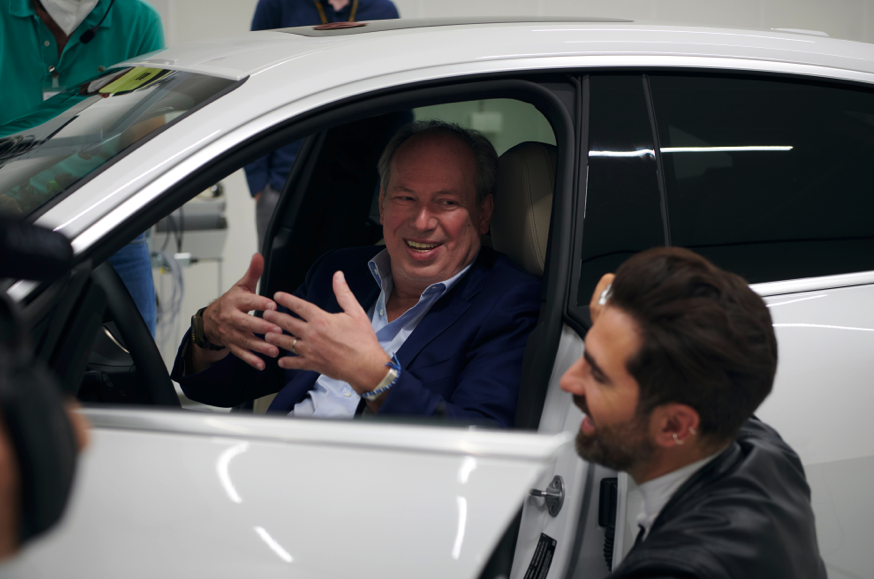 BMW and Hans have reinterpreted the sound of traditional instruments such as violins and French horns to create a more futuristic presentation, to create a more grandiose, freer, and more emotionally expressive atmosphere that is closer to the emotions of the driver.
BMW and Hans have reinterpreted the sound of traditional instruments such as violins and French horns to create a more futuristic presentation, to create a more grandiose, freer, and more emotionally expressive atmosphere that is closer to the emotions of the driver.
In addition to the unique sound effects during acceleration, BMW has specifically designed a pedestrian sound wave warning function (AVAS) to allow pedestrians to perceive nearby vehicles and ensure safety.
BMW’s electric vehicle sound simulation will be first introduced with the innovative BMW i4 in the first half of 2022 and will gradually be applied to more BMW electric vehicle models in the future.
Source: BMW official
This article is a translation by ChatGPT of a Chinese report from 42HOW. If you have any questions about it, please email bd@42how.com.
